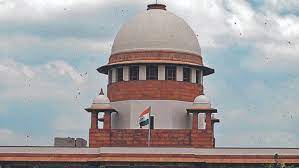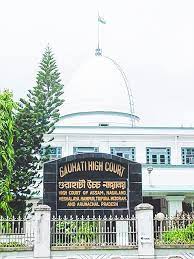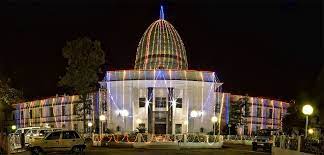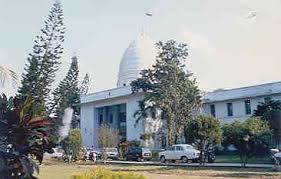Whereby the appeal filed by the State against the verdict of acquittal in favour of all 29 accused, vide judgment and order dated 25th September, 2004 in S.C. No.162 of 1999, passed by the Additional Sessions Judge – Presiding Officer, Fast Track Court-II, Kolar, was partly allowed. Overturning the same in respect of A-1 to A-5 and A-7, the Court while convicting them for having committed an offence punishable under Sections 143, 144, 146, 147, 148, 447, 324, 326, 504 and 506 r/w Section 149 of Indian Penal Code, 1860 sentenced each one of them to undergo rigorous imprisonment for a period of 4 years and pay a fine of ₹ 5000 each. (Para 1)
The evidence led was categorized into five heads – (a) ocular; (b) Dying declaration; (c) circumstantial evidence; (d) recovery of incriminating material; and (e) motive. (Para 4)
Numerous judgments have held that provided a dying declaration inspires confidence of the court it can, even sans corroboration, form the sole basis of conviction. (Para 11.4)
In order to rely on such a statement, it must fully satisfy the confidence of the court, since the person who made such a statement is no longer available for crossexamination or clarification or for any such like activity. (Para 11.5)
The facts at hand, the trial court has disbelieved such evidence. The discarding of eye-witness testimony is a factspecific inquiry, and therefore the correction of such an action by the trial court shall be discussed later. (Para 13)
Well then, who recorded the same?, What was his name?, What was his designation if he was a police personnel? remains unstated by her. Significantly, this witness also does not testify to the correctness or otherwise of the contents thereof. It was testified that at the time of recording of such statement “there were many persons around”. Who these persons were, is another aspect that remains unclear. Whether these persons were examined is unknown. The dying declaration was signed by thumb impression by the deceased but, it is not the case of the prosecution that the deceased was illiterate. The Doctor also does not state that the injured was in a condition to sign. Then why the thumb impression, remains a mystery casting a serious doubt about its authenticity or correctness of such declaration. (Para 18)
It is trite in law that given the nature of a dying declaration, it is required that such statement be free from tutoring, prompting, or not be a product of imagination. But it has emanated from the statement of the Doctor, PW1, that at the time of the dying declaration being made, there were numerous people present near him. In such a case, can it be categorically ruled out that the statement made by the deceased, is free from tutoring or prompting? (Para 20)
We find that none of these witnesses, eye-witnesses as they may be, to have established beyond reasonable doubt, the guilt of the accused persons. There is a contradiction in testimonies in regard to the number of persons who formed part of the unlawful assembly- one witness testified the presence of 50-60 persons while others testified to the group being of 25-30 persons; there is no clarity as to how the deceased ended up in the lands of PW11 – a material contradiction between two supposed eye-witnesses (Para 21.8)
We cannot, in our considered view, say that this witness, has deposed the truth. Not only that, when we perused the cross-examination part of the testimony, we found his version to be uninspiring in confidence. He does not remember as to whether the police have carried out an investigation on the spot where his brother was lying. He does not remember the police having visited the village. Does such an unexplained denial render the witness unreliable and unworthy of credit? It appears that the witness was not present on the spot and was introduced by the prosecution with suggestions, in fact, as put to him by the accused. (Para 21.9)
As the above discussion would show vis-à-vis the delineation on the qualities of a sterling witness, none of the witnesses of the prosecution would qualify per this standard. Numerous contradictions and inconsistencies have borne from record, rendering such witnesses to be unreliable and undependable so as to place reliance on the same to hold the accused persons guilty of having committed an offence. (Para 23)
However, the Trial Court held, given that the discoveries made were either from a public place or from an area where other persons also resided, reliance thereupon, could not be made. We find this approach of the trial court to be correct. (Para 27)
Our conclusions, therefore, are thus:
The dying declaration, although undoubtedly a substantive piece of evidence upon which reliance can be placed, in the present facts is rendered nugatory as the person who took down such declaration was not examined, nor did the police officer (PW19) endorse the said document with details of who took down the declaration. It is also not clear as to in front of which of the relatives of deceased was the same taken down.
The circumstantial evidence present on record does not point to the hypothesis of the guilt of the accused persons, for the reasons discussed above.
None of the eyewitnesses-PWs 2, 3, 15, as referred to by the trial court have succeeded in attributing a particular role to any of the accused persons and equally so, to A-1 to A-5 and A-7, whose acquittals have been overturned by the High Court. (Para 29)
In our considered view, the view taken by the Trial Court was a possible view and there being no error in correct and complete appreciation of evidence as also application of law; the High Court, without assigning any cogent reasons ought not to have interfered with such findings. (Para 30)
Since the sentence awarded by the High Court under Section 304 Part II of the IPC was for 4 years, and the application of exemption from surrender was disallowed by this Court, vide order dated 13th December 2010, the Appellants appear to have already served the sentence awarded to them. (Para 34)
It is however directed, that the fine made payable by each of the accused, as a result of the impugned judgment be refunded to them. Consequently, bail bonds, if in effectuation, shall stand discharged. The appeal is accordingly, allowed. (Para 35)
SUPREME COURT OF INDIA
2023 STPL(Web) 404 SC
[2023 INSC 978]
Manjunath & Ors. Vs. State Of Karnataka
Criminal Appeal No. 866 of 2011-Decided on 6-11-2023
https://stpllaw.in/wp-content/uploads/2023/11/2023-STPLWeb-404-SC.pdf







